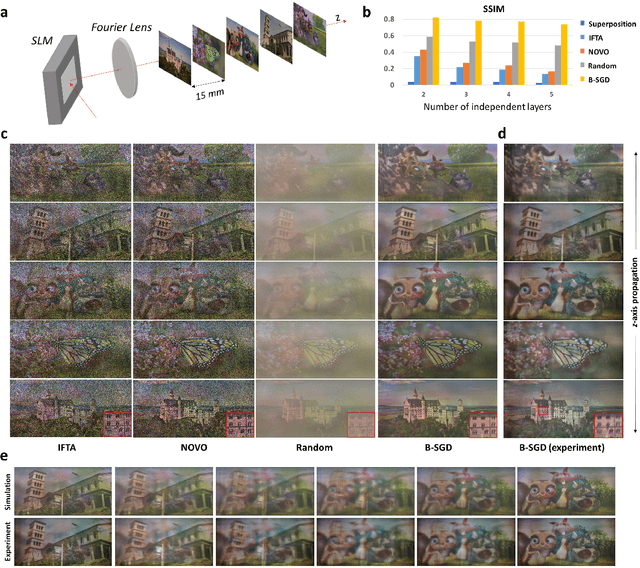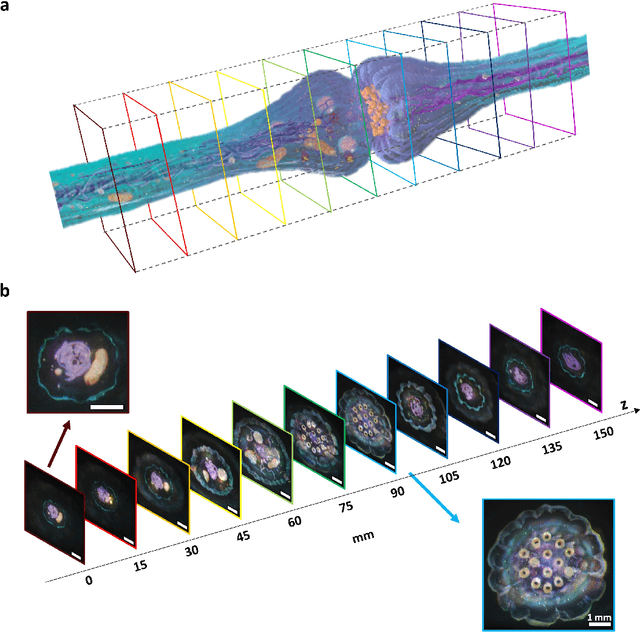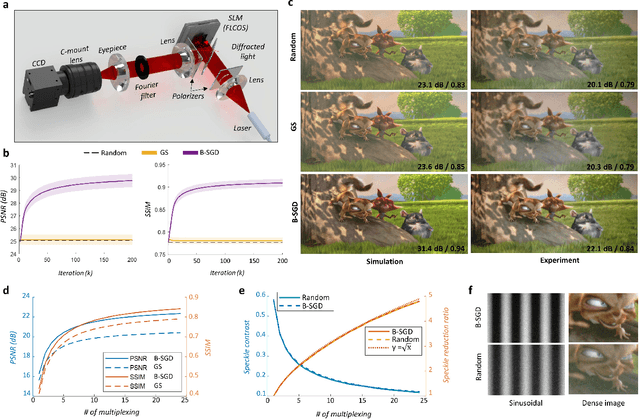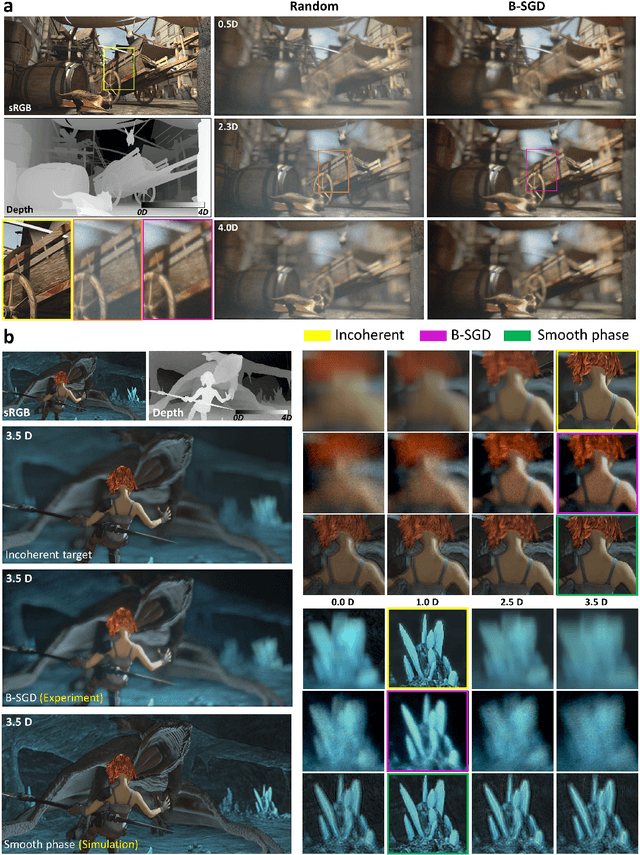Dongyeon Kim
Depolarized Holography with Polarization-multiplexing Metasurface
Sep 26, 2023Abstract:The evolution of computer-generated holography (CGH) algorithms has prompted significant improvements in the performances of holographic displays. Nonetheless, they start to encounter a limited degree of freedom in CGH optimization and physical constraints stemming from the coherent nature of holograms. To surpass the physical limitations, we consider polarization as a new degree of freedom by utilizing a novel optical platform called metasurface. Polarization-multiplexing metasurfaces enable incoherent-like behavior in holographic displays due to the mutual incoherence of orthogonal polarization states. We leverage this unique characteristic of a metasurface by integrating it into a holographic display and exploiting polarization diversity to bring an additional degree of freedom for CGH algorithms. To minimize the speckle noise while maximizing the image quality, we devise a fully differentiable optimization pipeline by taking into account the metasurface proxy model, thereby jointly optimizing spatial light modulator phase patterns and geometric parameters of metasurface nanostructures. We evaluate the metasurface-enabled depolarized holography through simulations and experiments, demonstrating its ability to reduce speckle noise and enhance image quality.
High-contrast, speckle-free, true 3D holography via binary CGH optimization
Jan 07, 2022



Abstract:Holography is a promising approach to implement the three-dimensional (3D) projection beyond the present two-dimensional technology. True 3D holography requires abilities of arbitrary 3D volume projection with high-axial resolution and independent control of all 3D voxels. However, it has been challenging to implement the true 3D holography with high-reconstruction quality due to the speckle. Here, we propose the practical solution to realize speckle-free, high-contrast, true 3D holography by combining random-phase, temporal multiplexing, binary holography, and binary optimization. We adopt the random phase for the true 3D implementation to achieve the maximum axial resolution with fully independent control of the 3D voxels. We develop the high-performance binary hologram optimization framework to minimize the binary quantization noise, which provides accurate and high-contrast reconstructions for 2D as well as 3D cases. Utilizing the fast operation of binary modulation, the full-color high-framerate holographic video projection is realized while the speckle noise of random phase is overcome by temporal multiplexing. Our high-quality true 3D holography is experimentally verified by projecting multiple arbitrary dense images simultaneously. The proposed method can be adopted in various applications of holography, where we show additional demonstration that realistic true 3D hologram in VR and AR near-eye displays. The realization will open a new path towards the next generation of holography.
 Add to Chrome
Add to Chrome Add to Firefox
Add to Firefox Add to Edge
Add to Edge